The News-Hub/ Articles
Back to Articles
Recommended Articles
What is Fast Fashion and Why Should You Care?
When we think of pollution, we typically think of aeroplanes flying overhead, the stream of noisy traffic on local roads, or even the piles of plastic clogging up our coastlines. We rarely think about the clothes we wear. However, the fashion industry, especially so-called ‘fast fashion’, is in many ways even more harmful than everything noted above. This article outlines why, as a society, we should all care much more than we already do about our clothing habits.
What is Fast Fashion?
Let’s face it, for a lot of us, when we go to the shops to update our wardrobe we don’t have longevity on our minds when making the purchase. We think ‘These clothes will do for as long as society approves’. Consequently, when society no longer deems them particularly desirable, neither do we. Off to the bin they go. The same occurs with the next batch of clothing, and so forth. The fashion moguls are responsive to this, churning out more and more collections for us to don then dispose. To keep up with the high demand, and the pace with which we get through trends, it is not uncommon for stores to produce weekly “micro seasons” that introduce about 52 collections per year. To cope with this high demand, cheap labour and cheap materials are sought out in order to maximise the profit with as little expenditure as possible in as little time as possible. This is a production and consumption process which has been dubbed ‘fast fashion’.
Fast fashion has become particularly potent over the past couple of decades with the rapid rise of the internet, and social media in particular, where an item of clothing can be seen, liked, and purchased within a matter of seconds, arriving at your doorstep the next day. It is perhaps due to these developments that we now consume 80 billion new pieces of clothing a year – a 400% increase from what we consumed in the year 2000. The speed with which we get through our clothes is exemplified by the fact that the average person buys 60% more items of clothing than they did 15 years ago, whilst keeping the garments for only half as long.
Why is Fast Fashion Bad?
All these clothes in such little time spells trouble for the environment. So much so that the clothing industry is the second most pollutive in the world after the oil industry. Startlingly, the industry is now responsible for more emissions than all international flights and maritime shipping combined. It is also responsible for 10% of total global carbon emissions - as much as the whole European Union. It is predicted that this share of the carbon budget could jump to 26% by 2050 if the fast fashion trend continues on its current trajectory.
How is Fast Fashion Affecting the Environment?
Pollution occurs at all stages of the clothing life cycle. During production, it occurs with the use of synthetic fibres, cotton, and textile dyeing. Then, when we use the clothes, they pollute when we wash them. Once we throw them away, they pollute in landfill. Each of these issues will be discussed below, followed by ways we can change things for the better!
Synthetic Fibres and Non-Organic Cotton
Firstly, 65% of our clothes are made from synthetic fibres (e.g. polyester, acrylic, nylon). These are produced via the use of fossil fuels, making production very energy intensive, thus releasing a great deal of greenhouse gas emissions.
Clothes can also be made from cotton, which is found in 40% of the world’s garments. However, only 0.4% of this is organic cotton, which doesn’t use pesticides and uses more natural water sources. To produce non-organic cotton however, large amounts of water and poisonous pesticides are used. It takes about 700 gallons to produce one cotton shirt. That's enough water for one person to drink at least eight cups per day for three-and-a-half years. Furthermore, it takes about 2,000 gallons of water to produce a pair of jeans; enough for one person to drink eight cups per day for 10 years.
It is no surprise, then, that the fashion industry is the second-largest consumer of water worldwide. Enough water is used in the industry to quench the thirst of 110 million people for an entire year.
The chemicals used in garment production, such as the pesticides, can also be very harmful. They are known to cause disease and premature death amongst cotton farmers, as well as cause freshwater, ocean and soil degradation.
Aral Sea Crisis
A prime example of the toll that cotton production and its reliance on water can take on the eco-system is exemplified by the Aral Sea crisis. Cotton farming used up so much water from the Aral Sea, which was once one of the world’s largest lakes, that it is now only 10 percent of the size it was 50 years ago. As a result of the sea drying up, the fisheries and communities relying upon its resources failed. The fertilizer and pesticides from the nearby fields, and the dust from the dry lakebed which contained these chemicals, saturated the air causing a public health crisis.
Textile Dyeing
The dyeing process is much like the process used to manufacture cotton in terms of its strenuous demands for water. Not only is water used in the wet processes involved in dyeing clothes, but high amounts of energy are required to heat that water. Greenhouse gases thus again come into the picture. Startingly, so much water is used in the dyeing process that it could fill 2 million Olympic-sized swimming pools each year.
Once the dyeing process is complete, the toxic wastewater leftover from it is often dumped into ditches, streams, or rivers - an extremely harmful prospect for people, animals and vegetation in the surrounding areas. Once thriving rivers in China, India and Bangladesh have been transformed into biologically dead zones replete with cancer-causing chemicals due to the wastewater discarded from the factories. Textile dyeing in fact produces 20 percent of global wastewater.

Textile Dyeing | Imgage from pixabay
Microfibres
Production is just the start of the problem. Clothes also pollute when we wash them. Washing clothes releases 500,000 tons of microfibers into the ocean each year — the equivalent of 50 billion plastic bottles. A 2017 report from the International Union for Conservation of Nature (IUCN) estimated that 35% of all microplastics - tiny pieces of non-biodegradable plastic - in the ocean come from the laundering of synthetic textiles. Furthermore, in large part because of having entered the ocean, non-biodegradable microplastics have entered the food chain and human water supplies, posing a still unknown overall risk to human and other species health.
Waste
Garments continue to pollute when disposed of. There are various difficulties involved in recycling clothes, so 85% of them are sent to the dump yard. The equivalent of one garbage truck full of clothes is burned or dumped in a landfill every second. To make matters worse, most of our clothes are made from synthetics fibres, which are essentially plastic fibres. They are therefore non-biodegradable. Thus, when sent to landfill, they can take up to 200 years to decompose. Once decomposing, they release the greenhouse gas methane into the air, and leach toxic chemicals and dyes into the groundwater and soil.
Why is Fast Fashion an Ethical Issue?
Fast fashion doesn’t just harm us through the environment. Its quick-paced nature is harmful in a much more direct way, especially through the working conditions of the factories in which these clothes are made. Because the demand for affordable clothing is so high, cheap labour is sought. Thus, 90 percent of the world’s clothing is produced in low- and middle-income countries. Each day, it is estimated that around 40 million people endure harsh working conditions every day for little reward. Some of the work can also be forced, as found in a US Department of Labor report which found evidence of forced and child labour in the fashion industry in Argentina, Bangladesh, Brazil, China, India, Indonesia, Philippines, Turkey, Vietnam and others.
Working conditions can often be dangerous - workers regularly breathe in dust and fibre from the textiles due to poor air-flow in confined working environments, a common cause of lung disease, cancer, and reproductive issues for industry workers. The repetitive nature of the work adds to the physical strains. Factories are often so poorly constructed that major accidents can occur, such as the collapse of the Rana Plaza factory in Bangladesh which killed 1,100 people and injured 2,500.
What are Some Fast Fashion Brands?
The ills of the fast fashion industry have now been laid out, but who are some of the perpetrators? Fast fashion has unfortunately become the norm across the industry, and some well-known fast fashion stores include Zara, Forever 21, and H&M. Zara especially is a case in point. The store churns out roughly 840 million garments each year for its 6,000 stores worldwide, and its 15-day cycle of designing to selling a garment is the reason the New York Times coined the term “fast fashion” in the first place. Other large online fashion companies such as ‘Boohoo’, ‘Misguided’ and ‘Fashion Nova’ also capitalise on the fast fashion trend to meet the heavy demand from their typically young target market.
So how to spot brands such as this? The tell-tale sign of a fast fashion brand is a brand that typically houses thousands of styles, which are always very on-trend (often ‘limited time only’), and are made of cheap, low quality materials.
Is Anything Being Done?
There are important steps being made to slow down fast fashion. Organisations designed to raise concerns about the industry, such as Fashion Revolution, are on the rise. In March 2019, the UN launched the Alliance for Sustainable Fashion to address the damage caused by fast fashion, seeking to ‘halt the environmentally and socially destructive practices of fashion’. Also, through coalitions such as the G7 fashion pact which has 32 companies representing 150 brands pledging to tackle the impact of fashion on climate change, it seems that some companies are taking some steps in the right direction. However, ventures such as this, which are non-obligatory, often fail to influence fashion brands to make changes because of fast fashion’s substantial contribution to their profits. We must pressurise governments to enforce stricter regulations. However, as consumers, we can also step in and make alternative choices to fast fashion which will surely make our governments, as well as the fast fashion companies, take note!
How Do I Stop Supporting Fast Fashion?
The obvious place to start is to choose sustainable fabrics for your clothing, such as natural or organic fibres. These do not require the intense use of energy and chemicals to produce garments that synthetics do; they release less microfibres when being washed; and they decompose faster in landfill. Sustainable fabrics include wild silk, linen, hemp and lyocell, organic cotton and even recycled fibres. The cheap materials used in fast fashion are the reason the quality is so bad and hence why they end up in landfill so soon! The natural fibres are better quality so they last longer, as well as being better for the environment. It’s a win win!
Another way to get eco-friendly clothes is to look out for whether they have been certified as sustainable. It is also a good idea to choose garments that are made in countries with stricter environmental regulations for their textile factories, for example Canada, the US, or countries in the EU.
Sustainable Shopping
Here’s some more tips on sustainable clothes shopping:
- Buy fewer items. The way to do this without taking a hit to your trendy reputation is to look for those timeless classic styles that you can see becoming a staple fixture in your wardrobe, calling upon them regularly and shamelessly (at least more than thirty times!).
- Re-evaluate. The next time you’re thinking about throwing a garment away, think again and think different. Could this actually maintain its trendiness if I wore it with something else?
- Re-consider. The next time you whip out your debit card to buy a new garment, think: ‘Do I actually need this, or is it just a heat of the moment thing?’ Sleep on it perhaps.
- Buy some of your clothes second hand. This is a good way to save on the natural resources that go into making a new garment and also keeps a piece of clothing out of the landfill. You could even donate clothing to a local charity shop for someone else to buy.
- Rent. For special events where you suspect that the garment you wear might be a one and only thing, there are companies, such as Rent the Runway, which allows you to rent your clothes.
- Play swapsies. Your friend’s top that you always thought was quite nice but they’re starting to get bored of…swap it for one that you’re tired of but they always liked!
- Overall, when out looking for clothes, think ‘Slow Fashion’, a term used to describe a thoughtful and holistic approach to fashion. Ask yourself ‘Where was this made? What is it made of? What went into making it? How long will it last?’ Be caring for the planet and yourself in choosing your garments.
Fashion Fanatics Unite!
The more we as individuals take action and shop for our fashion sustainably, the weaker the fast fashion trend will become. The less demand there is for those cheap, damaging fibres made in unacceptable factory conditions, the less they will be produced, and the more breathing space our planet will get! So, open your wardrobe now, evaluate how eco-friendly it is, and take those first few steps into a more sustainable future. We can all make a difference if we unite in the cause!
Already part of the fight against fast fashion and have some thoughts or experiences worthy of sharing? Let us know in the comments below!
For a deeper dive into fast fashion check out this great article here...
Empty content. Please select category to preview




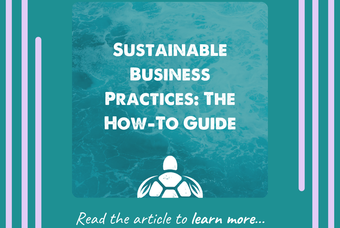

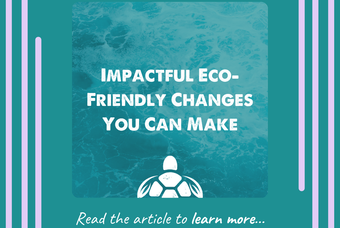
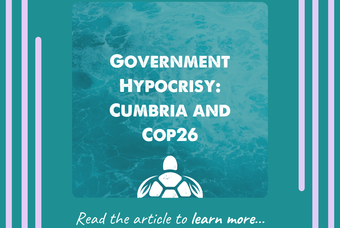
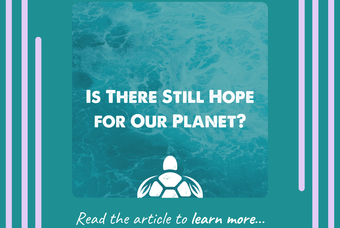
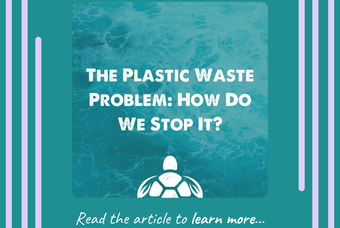

0 comments. Write a comment